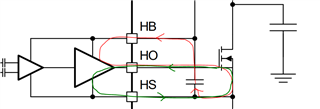Other Parts Discussed in Thread: LMG1205, , LMG1020
Hello, TI experts,
Is there any faster 5V (commercial TI) gate drivers than LMG1205 or LMG1210 multi-level hybrid converter PCB design? I feel like the rise/fall times and delay are over 10ns. The interest fsw range is 500kHz to 2MHz, can you suggest gate drivers which has less than 10ns or 5ns delay and fast rise and fall time?
Thanks



